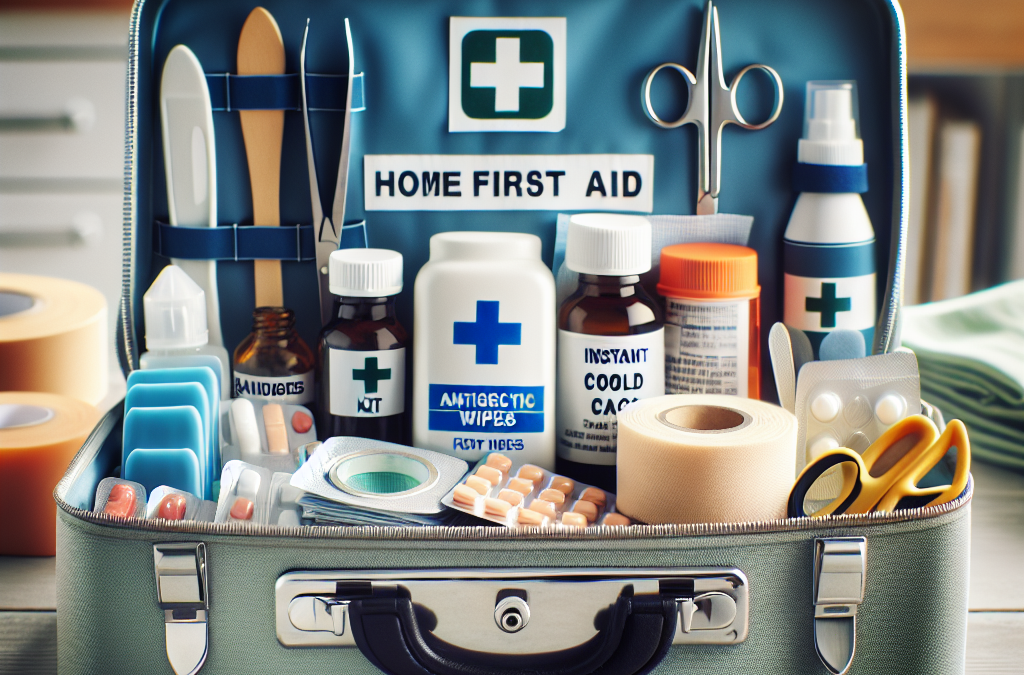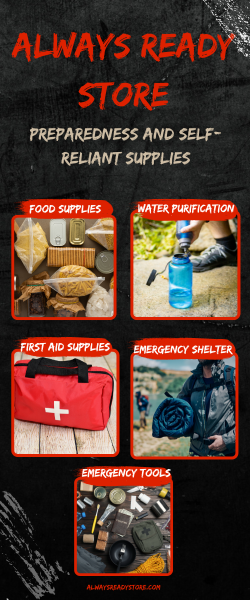1. Basic Supplies for Injury Treatment
Understanding the Basics
When I first started thinking about putting together a first aid kit, I realized how important it is to have the right supplies on hand. Basic supplies like adhesive bandages, gauze pads, and antiseptic wipes are the fundamental building blocks. Trust me, these items are lifesavers in small accidents, and it’s best to have them close by.
For me, the excitement of creating my own kit made me think of all the “just in case” moments we encounter—tiny cuts, scrapes, and even blister problems. Anyone who’s ever taken a hike knows those shoe blisters can sneak up on you, and having the right band-aid can make all the difference.
Moreover, stocking up on these basics doesn’t need to cost a fortune. You can find most essentials at your local pharmacy or even dollar store. Just remember, you want to ensure everything is easily accessible so you’re not scrambling around when you need it the most.
Choosing the Right Materials
So there’s more to first aid supplies than just what looks nice on the shelf. You really need to think about the materials you’re choosing. For instance, breathable bandages are a must because they help wick moisture away, reducing infection risk.
I like to choose products that come with clear instructions right on the packaging; if I’m in a panic, I don’t want to be deciphering tricky directions. That clarity can save lots of time and keep stress levels down.
Let’s not forget the importance of expiration dates. It’s easy to forget about items hiding at the back of the drawer! I set a reminder to check my kit every six months, so things like antiseptic wipes and ointments don’t go bad.
Thank you for reading this post, don't forget to subscribe NOW for FREE!
Special Considerations
Depending on your lifestyle, you might need to include some unique items. For example, if you or someone in your household suffers from allergies, having antihistamines on hand is crucial. Or if you have kids, those adorable cartoon band-aids can encourage them to keep their spirits up after a tumble!
Keep in mind any specific medical needs too. If someone has a prescribed medication or special equipment, that should definitely be included. I’ve learned from experience that incorporating those needs into your first aid plan prevents panic later on.
Last but not least, consider environmental factors. If you enjoy outdoor adventures, some insect bite relief or sunburn cooling gel could come in handy. It’s all about tailoring your kit to fit your personal needs and preferences.
2. Medications You Should Have
Basic Over-the-Counter Medications
I’ve discovered that having a few basic over-the-counter meds in my kit can be a game changer. Pain relievers like ibuprofen or acetaminophen help ease headaches or body aches that can pop up unexpectedly, especially after an active day.
Don’t forget about antacids, either. Those pesky moments when spicy food backfires can be uncomfortable, and having a little something to ease the burn can turn a rough evening into a more bearable one.
And let’s not skip over good ol’ allergy remedies—hay fever can hit hard when the seasons change. Keeping some antihistamines on hand will help you breathe a lot easier during those troublesome months.
Cold and Flu Essentials
No one wants to be caught off guard by a scratchy throat or runny nose, right? I always keep some cold and flu medications in my first aid kit. Syrups, throat lozenges, and nasal decongestants are must-haves for any unexpected illness.
I’ve learned by experience that a little preparation can prevent a lot of discomfort. When those symptoms hit, having the comfort of familiar remedies makes staying cozy on the couch a whole lot better.
Plus, I’ve got to say, it beats making a late-night pharmacy run when you just want to rest up. So stock your kit with what works for you!
Prescription Medications
Now let’s chat about prescription meds. This can get a little tricky because it’s not just about stocking up—it’s about staying organized. I dedicate a little space in my kit for personal prescriptions to ensure I’m always prepared.
One tip I’ve found helpful: keep a list of emergency contacts, including doctors. That way, if something happens and you need a refill or medical advice, you know right where to look.
Make sure to follow the guidelines for storage. Some medications should be kept in specific conditions—like out of sunlight or in a cooler environment. It’s all about keeping everything safe and effective.
3. Tools and Accessories That Matter
Basic First Aid Tools
Definitely don’t overlook the significance of good tools! Scissors, for instance, can help you cut through stubborn bandages quickly when you need to get to an injury.
Also, tweezers are excellent for removing splinters or pulling out ticks, which are way too common in warmer months. Trust me, these tools can make all the difference in an emergency.
Adding a digital thermometer to my kit has truly been a lifesaver. Checking temperatures can guide my responses, especially with the kiddos. A good thermometer means I know when it’s time for a cold compress or a doctor’s visit!
Personal Protection Equipment
When I think about first aid, I always consider personal protection. Disposable gloves have become a staple in my kits ever since I realized how handy they are when dealing with injuries.
Alongside gloves, a basic face mask could come in handy during specific situations, especially if you’re around someone who’s ill. It just adds a layer of safety that goes a long way.
And, don’t forget about a face shield or goggles if there’s a chance for blood sprays, especially in situations where safety is paramount. It might seem like overkill, but being prepared can be a lifesaver!
Storage and Organization
Having all the right tools and supplies is all well and good, but if they aren’t organized properly, it can feel like chaos. I recommend utilizing clear containers or pouches to help keep things sorted and easy to find.
Labeling each section or container makes things super simple. In a moment of panic, you want to grab what you need without hunting through layers of clutter.
Lastly, think about where you’re storing your kit. I’ve created a designated spot in my home that’s both easily accessible but also out of reach from little hands. Finding that balance means I’m ready for anything that comes my way.
4. Tailoring Your Kit to Your Family
Assessing Your Family’s Needs
Taking the time to evaluate my family’s unique needs has made tailoring our first aid kit much more effective. Think about the age of everyone in your household—do you have toddlers or teenagers? Each group brings different challenges.
For parents, adding items like teething gel or pediatric pain relievers can be crucial. And for teens, maybe some acne treatment should be thrown in the mix. It’s all about anticipating what might come up!
Consider any ongoing medical conditions too. Stocking your kit with necessary extras ensures you feel prepared for anything, whether it’s managing a fever for a child or preparing for a fainting spell in a grandparent.
Special Considerations for Pets
And let’s not forget about our furry companions! I’ve found it essential to have pet-specific items in my first aid kit. A basic supply of tweezers or special pet first aid guides can really help in emergencies.
If your pet has allergies, try to keep their antihistamines handy—because trust me; they can suffer too. Canine first aid can sometimes feel like a whole other ballgame, so having resources can ease some worries.
Don’t forget important items, like a muzzle or leash for a scared or injured pet. They can help you manage the situation safely while you access care!
Involving Family Members
One thing I’ve truly enjoyed is involving my family in building and maintaining our kit. It’s a great way to educate everyone about the supplies while also preparing them for possible emergencies.
Each person can take the time to learn what to do in certain situations, from basic CPR to identifying what to grab in a hurry. Plus, having everyone involved sparks interesting conversations about health and fitness!
Make it a family event to restock the kit together—checking expiration dates brings everyone together while also teaching responsibility. It becomes a communal activity, strengthening your family’s preparedness and confidence.
5. Training and Preparedness
Understanding Basic First Aid
If there’s one lesson I’ve learned, it’s that having a well-stocked first aid kit is only part of the equation. Gaining knowledge about how to use those supplies is equally essential. I took a basic first aid course, and it opened my eyes to what I can do in emergency situations.
Learning techniques like CPR, bandaging wounds, or how to treat burns encourages confidence when handling accidents. Plus, it’s empowering to know that I can care for myself and my family when needed.
Many organizations, like the Red Cross, offer great resources and even certifications in first aid and CPR. I highly recommend checking those out—they’ve been game changers for me!
Regular Refresher Courses
Knowledge isn’t enough if it gets rusty over time! I regularly sign up for refresher courses and online webinars, because staying informed is super important. Plus, it’s fun to meet others interested in emergency preparedness!
Even just reviewing materials or reading first aid manuals every now and then can keep life-saving techniques fresh in my memory. Journals and guides often have updated information that may improve my approach to home health emergencies.
Sharing that knowledge with my family can be a good bonding experience too. Together, we work through different scenarios, keeping those important conversations open and ensuring everyone knows what to do when a challenge arises.
Creating a Plan
Beyond gathering supplies, creating a comprehensive emergency plan is essential. I made sure to sit down with my family to discuss what we would do in different situations, like natural disasters or severe injuries. Everyone has a role to play, and knowing that is comforting.
We also set communication plans—deciding who to contact for help or how to find each other in public spaces if separation occurs. It’s all about feeling prepared and knowing we have each other’s backs.
Finally, I have a designated spot to keep our plan accessible, so in the heat of the moment, we can refer to it for guidance. It’s all about remaining calm and collected, and knowing what our next steps should be can help with that tremendously.
Frequently Asked Questions
What is the best place to store a first aid kit?
The best place to store a first aid kit is in a location that is accessible to all family members but out of reach of young children. A kitchen cupboard, a hall closet, or under a bathroom sink usually works well.
How often should I check my first aid kit supplies?
It’s a good idea to check your first aid kit every six months. This helps ensure that all items are in good condition and have not passed their expiration dates.
Can I use expired first aid supplies?
While some items might retain their effectiveness past expiration dates, it’s generally best to replace expired supplies to ensure optimal safety and effectiveness.
Should I include specific medications for family members in my first aid kit?
Yes, you should include any specific prescription medications or necessary items for family members who have ongoing medical needs. Just make sure they’re stored properly!
Is it worth it to take a first aid class?
Absolutely! Taking a first aid class prepares you to handle emergencies effectively and gives you confidence in your skills. Plus, it can be quite empowering!






